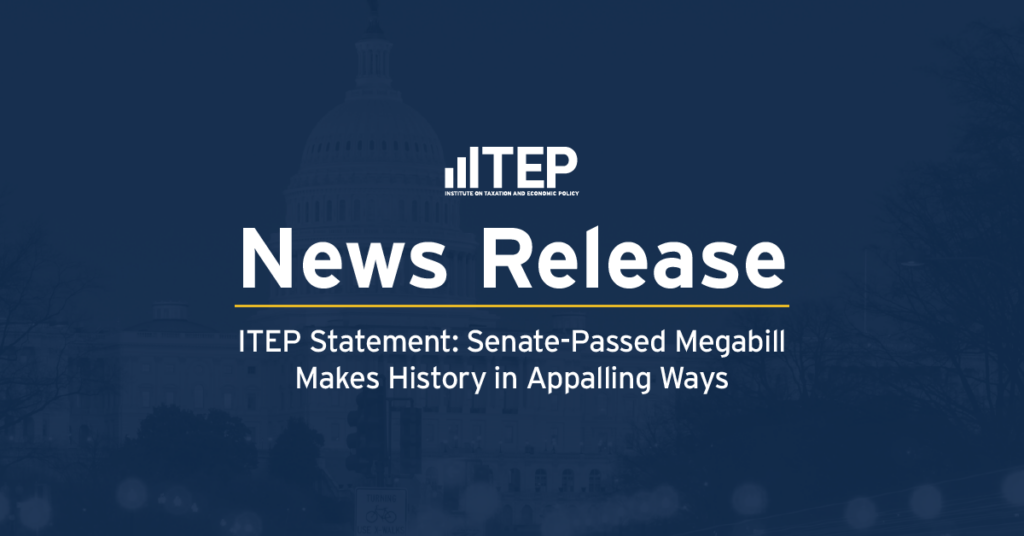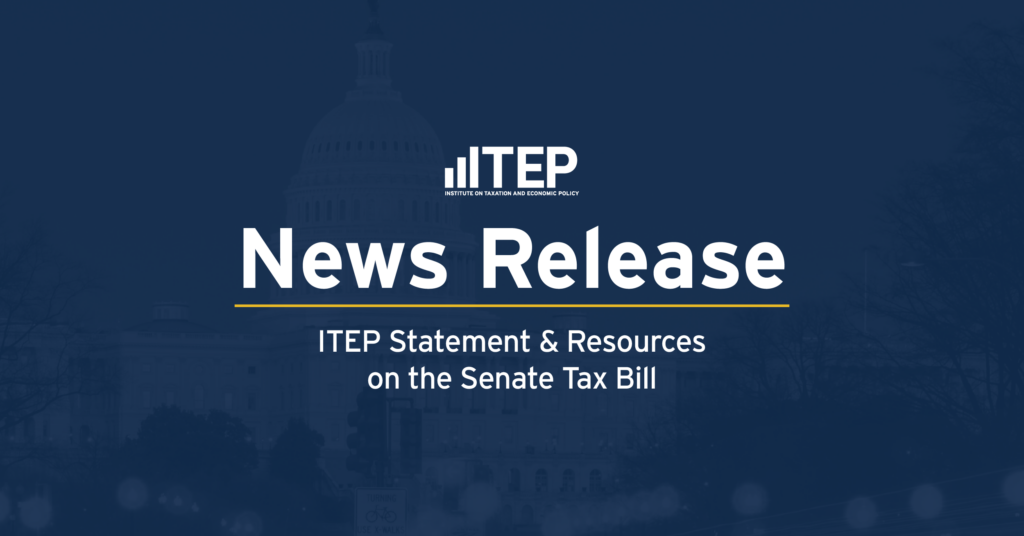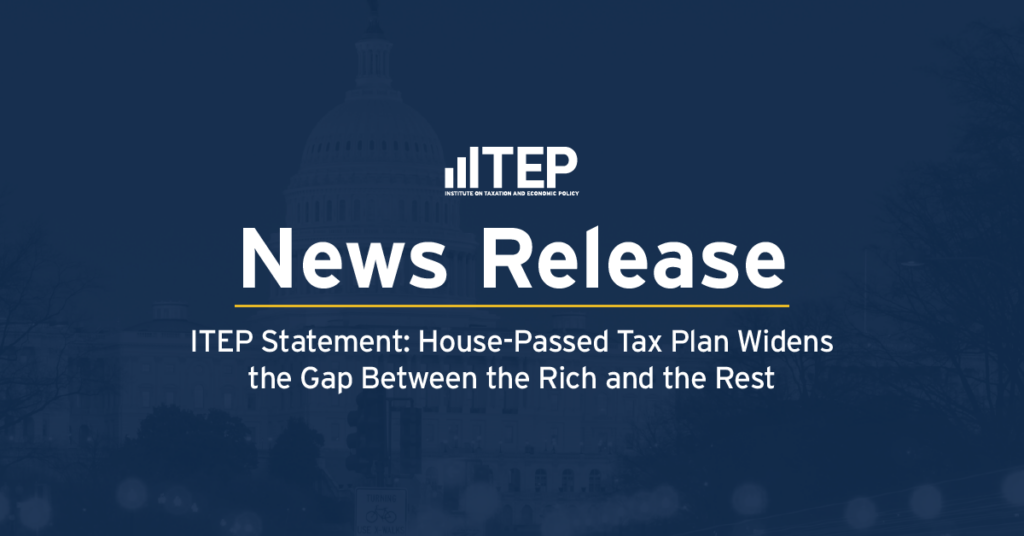New 50-State Analysis: Poorest 20 percent pays a 50 percent higher effective state and local tax rate than the top 1 percent
Most state tax systems contribute to widening income inequality by making after-tax income even more unequal
A comprehensive 50-state study released today by the Institute on Taxation and Economic Policy (ITEP) finds that most state and local tax systems tax low- and middle-income households at significantly higher rates than wealthy taxpayers, with the lowest-income households paying an average 50 percent more of their income in taxes than the very rich.
The sixth edition of ITEP’s Who Pays? A Distributional Analysis of the Tax Systems in All 50 States finds that the disparity in average effective state and local tax rates is most stark between low-income households and the top 1 percent. Average tax rates across income groups are 11.4 percent for the poorest 20 percent; 9.9 percent for the middle 20 percent; and 7.4 percent for the richest 1 percent. ITEP’s analysis includes all major state and local taxes, including personal and corporate income taxes, property taxes, sales and other excise taxes, and estate and inheritance taxes. Besides a national average, the report provides a detailed breakdown of tax averages by income quintile for every state and the District of Columbia.
“State tax systems almost uniformly ask more of their lowest-income taxpayers than the very rich,” said Meg Wiehe, deputy director of ITEP and an author of the study. “Inequitable state tax systems don’t have to be a foregone conclusion. State and local lawmakers can and should take steps to ensure that their highest income earners pay their fair share. Tax policy should be used as a tool to help mitigate income disparities rather than to drive a wider divide.”
OTHER KEY FINDINGS:
- Low-income people pay higher effective tax rates because most state and local tax systems rely more heavily on regressive sales and excise taxes than progressive income taxes.
- States with graduated personal income taxes tend to be less regressive than states that have flat, relatively flat or no personal income tax.
- Forty-five states make income less equal after taxes. In all but five states, lower-income people have an even smaller share of total income after taxes than before. Nationally, the top 1 percent has 132 times more average income than taxpayers in the bottom 20 percent. Post state and local taxes, average income for the top 1 percent swells to 138 times more than the poorest 20 percent.
- The Terrible 10: There’s Regressive and There’s Even More Regressive. While all states have room to improve their state tax codes, some states stand out because the disparity between tax rates for low- and upper-income households is worse than the abysmal national average. Washington state is by far the worst. The effective tax rate for the poorest 20 percent of taxpayers is 17.8 percent, which is nearly six times higher than the 3 percent rate paid by the top 1 percent. Texas, Florida, South Dakota, Nevada, Tennessee, Pennsylvania, Illinois, Oklahoma, and Wyoming round out the “Terrible 10.” A common characteristic among many of these states’ tax systems is heavy reliance on sales and excise taxes and the lack of a broad-based personal income tax.
- Five states and the District of Columbia make income slightly more equitable after collecting state and local taxes, but they still fail the basic test of tax fairness because in every case low-income people are paying more in taxes than some middle-income people. California, which ranks at the top, for example taxes the top 1 percent at 12.4 percent, which is higher than the 10.5 percent rate paid by the lowest-income 20 percent. But the state’s tax system isn’t truly progressive because it taxes the middle-income quintile at 8.3 percent, which means middle-income taxpayers are paying a lower tax rate than the poor.
- The ITEP Tax Inequality Index ranks all 50 states based on how much more, or less, unequal incomes are after taxes. To view details on how each state fares, go to https://itep.org/whopays-map/or see appendix B of the report.
- States commended as “low-tax” are often high-tax for low- and middle-income families. Business-centric indices often rank the strength of a state’s business environment based on supposedly low taxes. But “low tax” often means low tax for businesses and the wealthy, accompanied by higher taxes for low-income people. Six of the “Terrible 10” are not only high-tax for the poorest, but also low-tax for their richest residents.
Why tax fairness is a challenge that policy makers must address
How states tax their residents matters for myriad reasons. Taxes provide revenue for a host of investments that benefit all people and communities, including education, public health, public safety, and transportation infrastructure. Tax systems should not ask those who have the least to provide a greater share of their income for services that benefit us all.
“It makes no sense to tax high-income taxpayers, who are enjoying faster income growth than any other group, at a lower rate than everyone else,” said Carl Davis, ITEP’s research director. “Adequately funded state and local governments are essential to building prosperous communities. It’s extremely difficult to fund government adequately and sustainably when families with the largest incomes are contributing the least.”
Even putting aside questions of fairness, there are also very practical reasons for states to be concerned about regressive tax structures. If the nation fails to address its growing income inequality problem, states will have difficulty raising the revenue they need over time.
“Policymakers should understand the impact their tax system has on taxpayers across the income spectrum when considering changes to their tax codes,” Wiehe added. “Too often tax policy decisions do not take into consideration who will pay more or less. This understanding could help policymakers make better informed choices and allow the public to better hold them accountable.”
- To read the entire report or to view a summary of state-specific data, go to whopays.org
- To learn more about the underlying analysis or frequently asked questions about how ITEP analysts derive these figures, go to: https://itep.org/about-who-pays/




